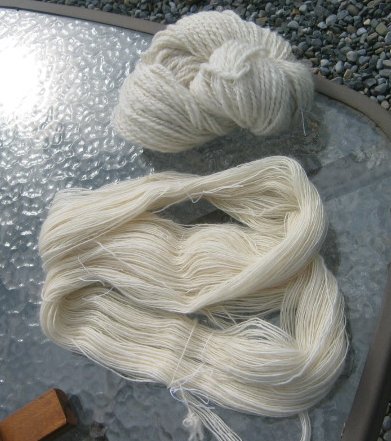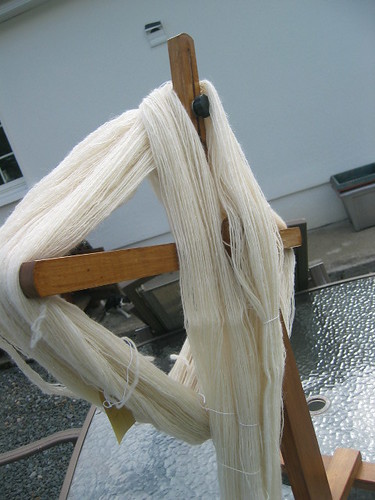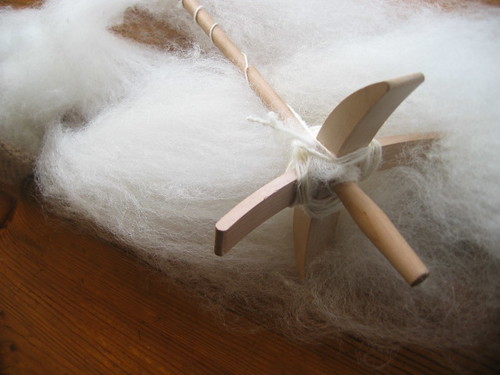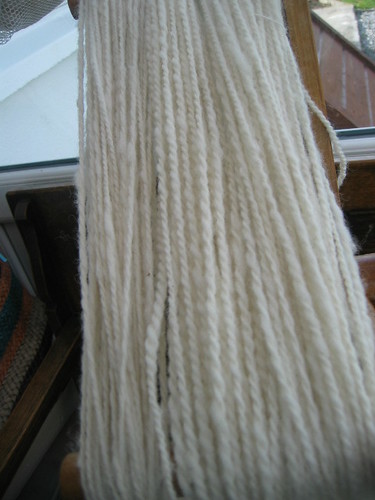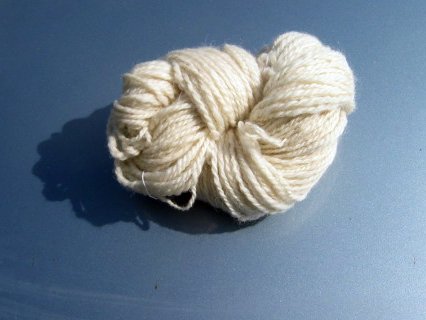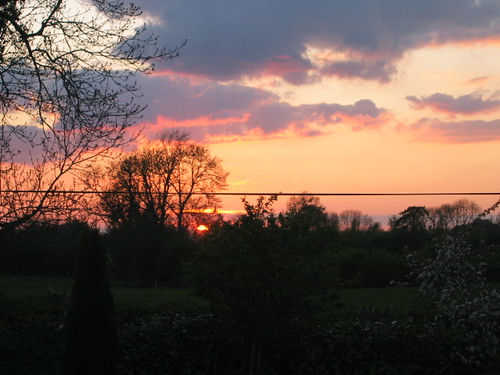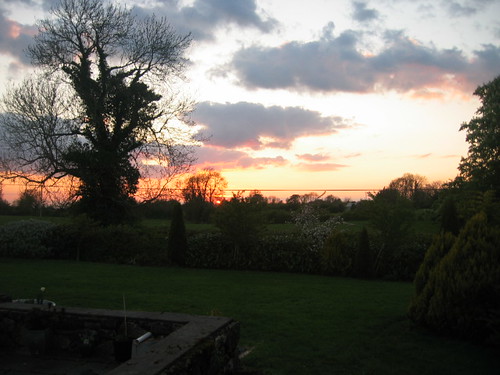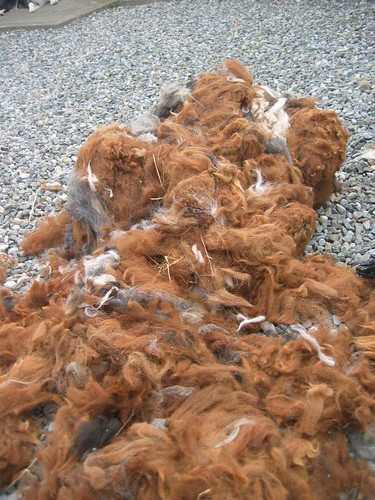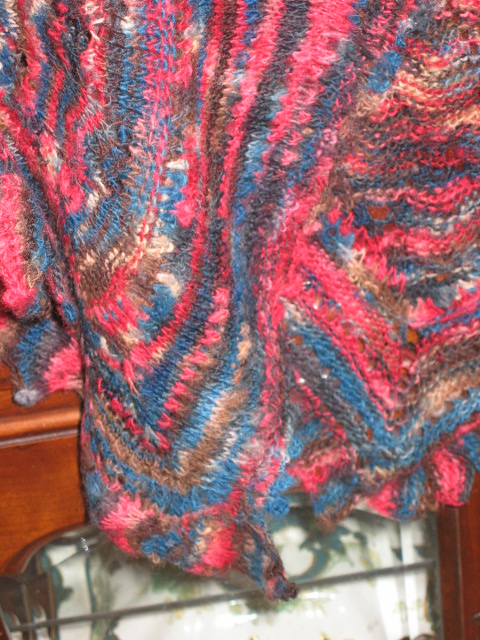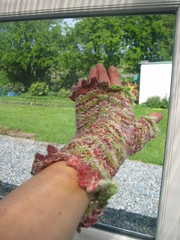I did anticipate this an put some blue dye on the head of the woolie one and a short bout of rain immediately all but washed it off. Her twins are quite distinctive though - being the only ones with evident color so I think I'm on safe ground classifying her a first cross. Anxt does set in though and I'll watch the later shedder carefully to make sure she IS the pure bred.
So, keen to protect this valuable mother from fly strike (she has two lambs depending on her) I tied her up for shearing. What I found was that instead of shearing her I had a better time rooing her. Rooing is pulling this years fleece growth off without cutting and leaving just the guard hairs in place.
The nasty leg/rump stuff fulled off easily and added to the mound of daggs in a big bag while along her shoulders back and sides the longer better locks were saved - about 300 grams if it. She became restless for her lambs before I'd pulled off all the side parts so I let her off to finish the process in the field by herself. Her rump, belly and neck are all quite clean
Shetland sheep may roo too so I had a look for info on that and found it on:
http://www.shetlandsheepinfo.com/FLEECE/rooing.htm
This links to some photos of the process too.
I can't add any at present as the camera is otherwise engaged.
This fleece has medium type fibers. I collected some previously from the field - higgeldy-piggeldy - to see if I could spin it. Well of course I could - it's hard to find stuff that won't spin but the yarn produced varied. The stuff I collected early in the year from barbed wire etc was longer and softer and made a small amount of pretty nice 2-ply yarn. The stuff I picked up later was more mixed, some of it very short indeed and some with more guard hairs - probable reflecting it's variable sources - mixtures of older and younger sheep, different parts of the body and some of the rams stuff mixed in too. This had to be hand-carded and spun long-draw really and it made a thinner, coarser 2-ply - but still quite usable . I'm currently knitting a sample - just a little scarf in it's natural color.
Hope to get some photos of these samples to remind me.
Bread
After Anna Browne's bread lessons last Tuesday in Mullingar I've baked (and almost completely eaten) one very nice sourdough round and one no-knead round which is underdone in the mid-to-lower regions and overdone on top (but still almost completely eaten :0 ). I had some assistance with the eating from husband but the eating,like the baking was almost all my own work too :).

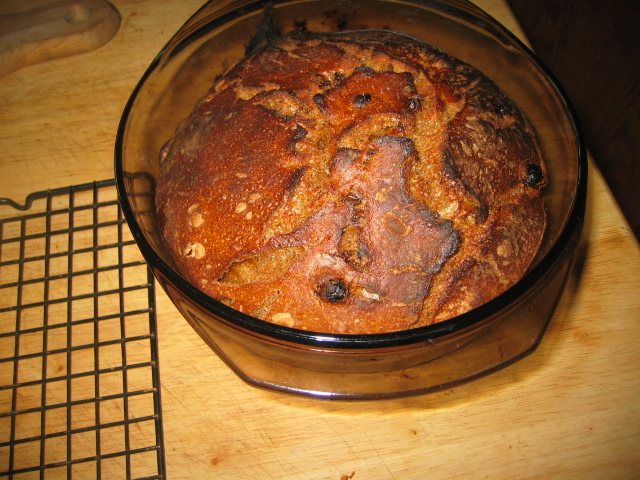
Discussion next week with Anna about how to tame my oven to improve the no-knead.
Atilla the hen struck again last month.
I tried to slowly introduce the red hen to her domain bringing with her veggie and other food treats. It seemed to be working so I prolonged the coupling a little more each time. Things seemed to be setting down between them until I left them together for over 20 minutes whereupon I saw Atilla sharpening her beak on the chickwire and scraping her nails in the dirt and before I could react, she'd taken a whack out of red hen's scalp again! Out with the bandage and antiseptic again - Grr. I suppose I'll have to give up the idea of them sharing one nice big open space. They have to stay in their respective runs. The last thing Atilla did after I removed red was to pick up a small red feather in her beak and slowly consume it in front of me!!
Fortunately red is healed up again and is growing steadily so maybe, one day she'll be ready to take on Atilla who by the way does produce an egg or 2 (yes, two) 2 out of 3 days, so she has her good points too.
******************************************************
